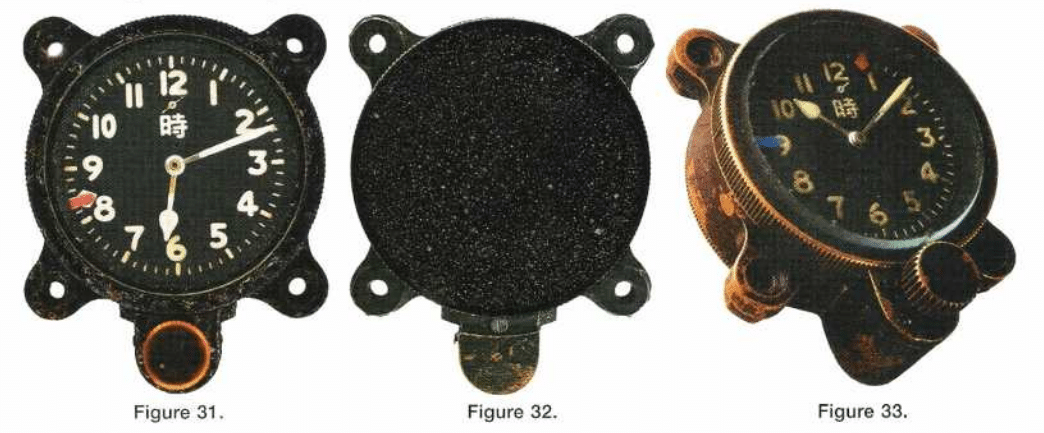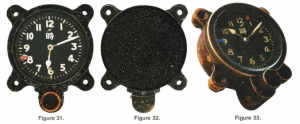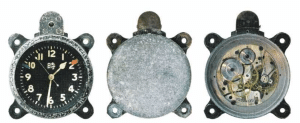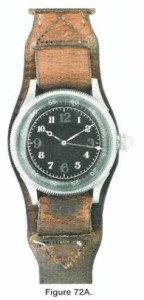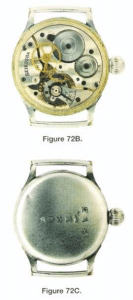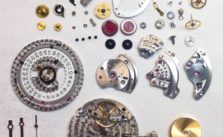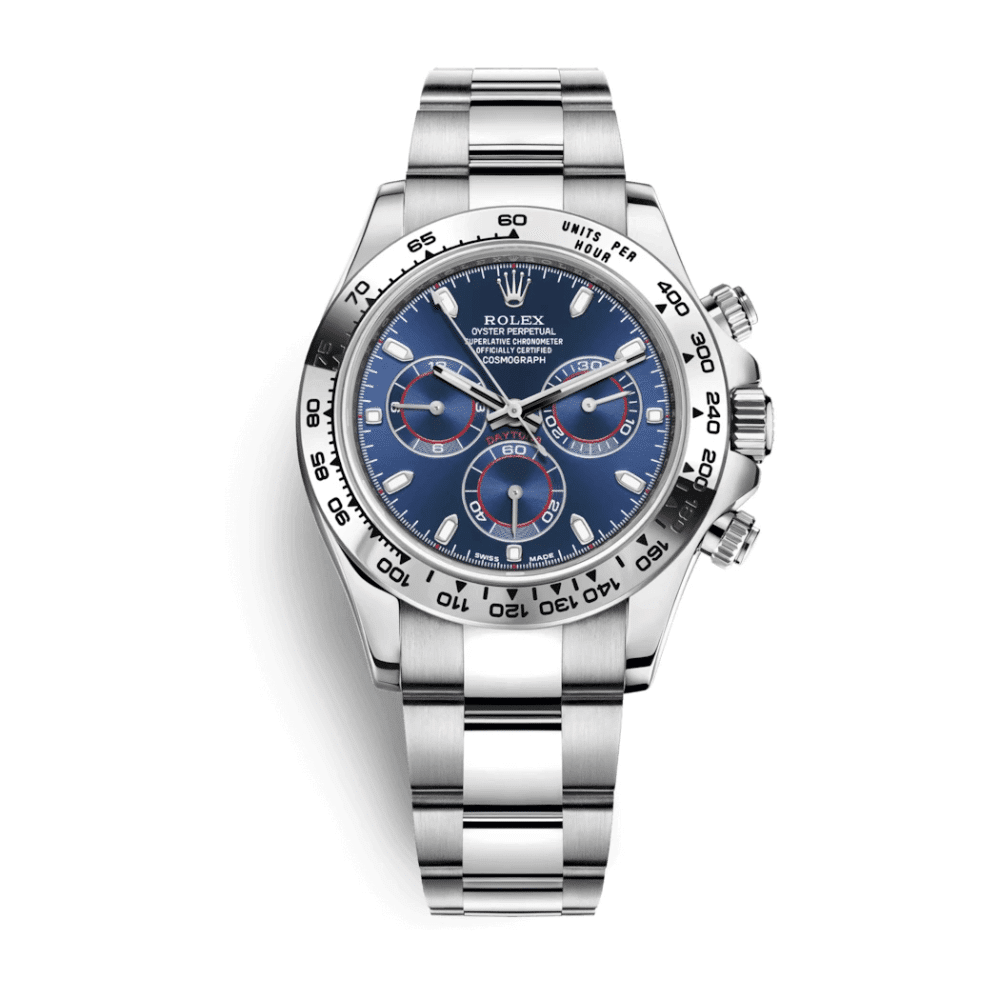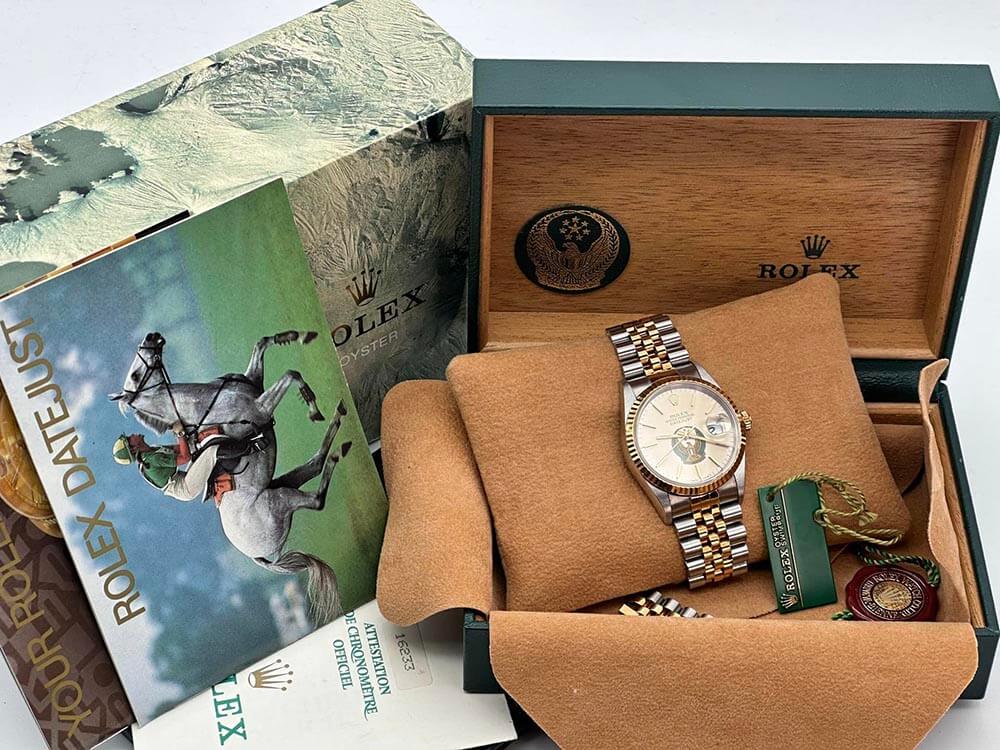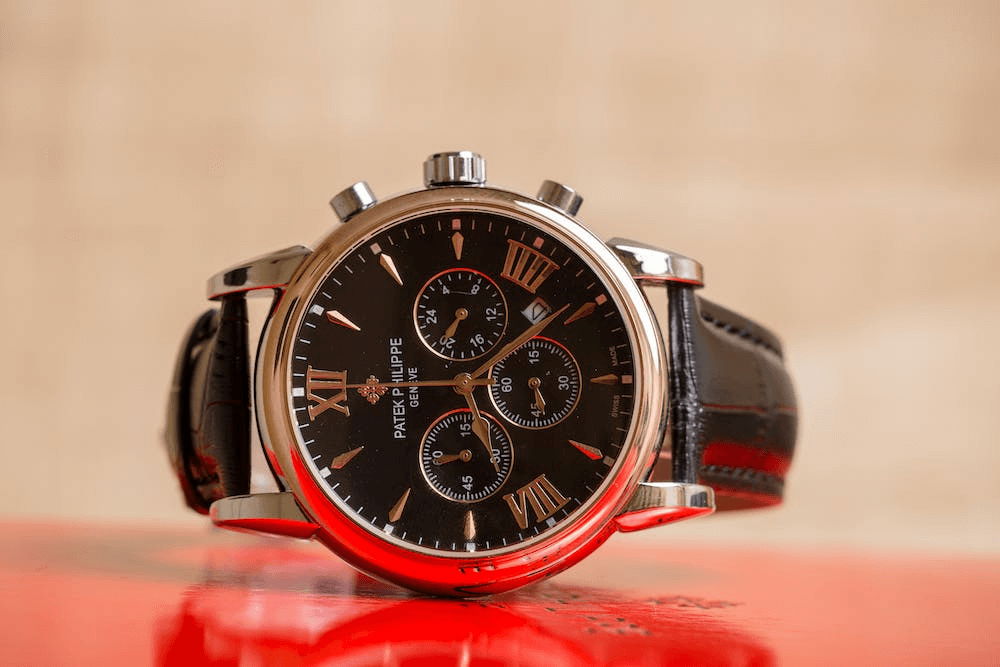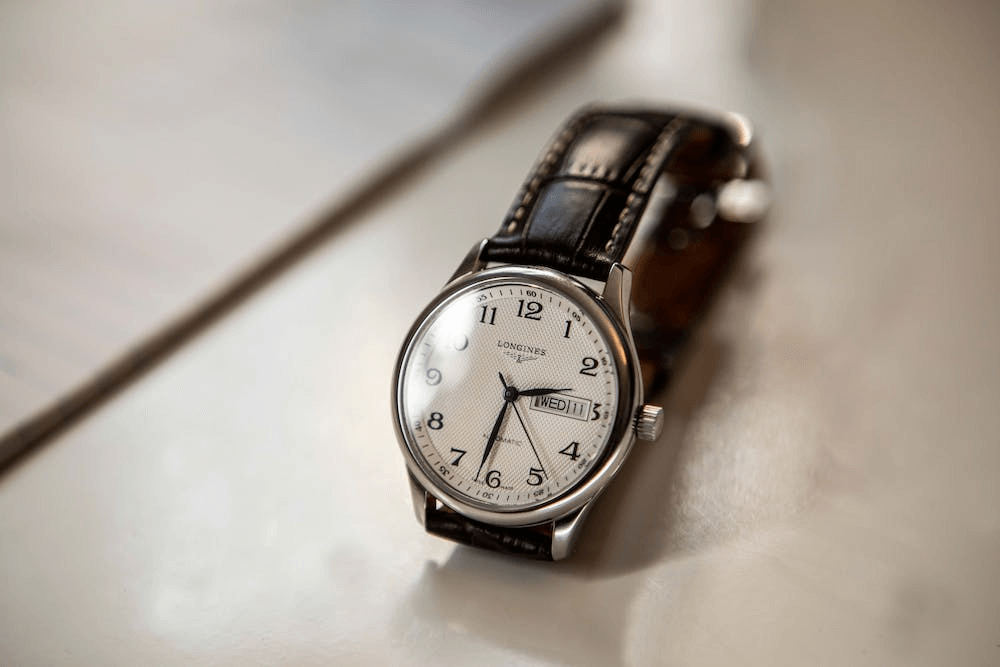Seikosha military clocks and watches
Aircraft Clocks
These clocks were manufactured by Seikosha and feature a pre-1940 brass case and hinges. Note the post-1940 patent metal twisting bezel with red, blue, or green arrows for time-marking and the large, Arabic, radium-illuminated (radioactive) digits. The four-holed flange allowed the clock to be fitted into aircraft instrument panels. A large brass knob (up to 1939) or plastic knob (after 1940) was pulled out to set the clock, which was approx. 7.5 cm in diameter. These clocks were fitted in the instrument panels of all Japanese aircraft. All clocks originally had the manufacture’s type-plate. In some cases the specifications can be translated as “Type 100 Clock.” Some clock plates from Army air force show the Army star alongside various quality-control markings. It is likely that examples also exist that bear the Navy anchor. The “Type 0”marking probably indicates the Navy.
This clock was sometimes called the “Zero Clock”, after Mitsubishi’s “Zero” fighter aircraft. Clock with brass casings date from 1936 at the latest. They are heavier and have a dark, golden yellow sheen. They were coated with a black paint that easily scrapes off. The winding knob, as well as the type-plate, are also brass. All the early versions have the Army stamp. Post-1940 clocks have aluminum casings with a plastic winding knob and an aluminum type-plate. They were varnished with a matte black paint. Under the paint the housing has a matte gray metal surface. A length of parachute silk was often threaded through the fastening holes. The pilot would have worn the clock around his neck, which allowed him to easily read the time.
A Seikosha aircraft clock with a small second hand at “12”and a turbable bezel with red marks for elapsed time. The dial is marked with the character for “time”. The aluminum case indicates a late production date.
Same type clock with a pre-war case of brass.
Figure 35 to 38, clockwise from top. Seikosha aircraft clock with central seconds, turnable bezel, and two colored elapsed time indicator marks. The dial is signed with “TOKI”, the case is of light metal, and the tag markings translate as “type 100 aviation clock no. “2481”.
The Oversized Aviator’s Watch
This watch, shown in Figures 72A-72C, was made by Seikosha. It has a 17-jewel bimtel movement with Breguet spiral, an indirect central second indicator, a nickel-coated case with twisting bezel, Arabic numerals with enlarged 3, 6, 9 and 12, self-illuminating digits on a black face, and it is nearly 50 mm in diameter. It has two roughly 15cm long, broad leather straps. The straps were long enough to enable the pilot to wear the watch on his arm over his thick flying jacket. As with the Seikosha aircraft clocks, these watches were not issued by the military but were privately owned. The central second movement is the same as that of the aircraft clock. It also moves at the same basic caliber as the pocket watch with the small second hand. It is now shock-proof. The large winding crown allowed the watch to be wound or set while wearing gloves. The watch did not bear the star or anchor markings of Japan’s two military branches. However, photographs conclusively show that both Navy and Army pilots made use of this watch.
Figures 71A to 72C, above.
An aviator’s large wristwatch by Seikosha, with a turnable bezel for elapsed time marking, 17 jewels, and original leather straps. This watch is also seen with the winding knob at the “12”.
